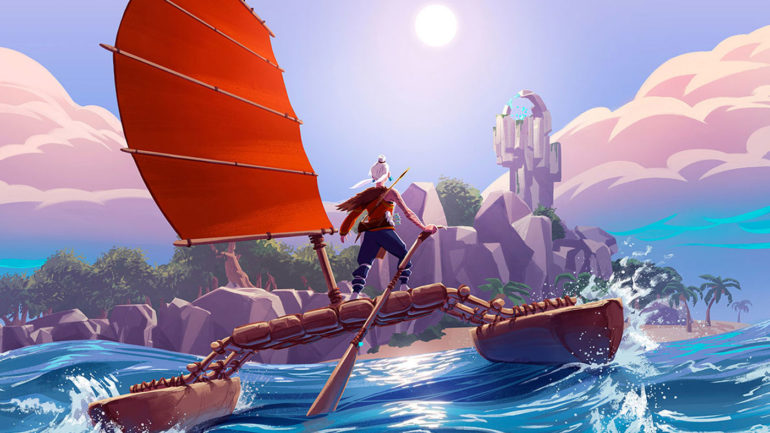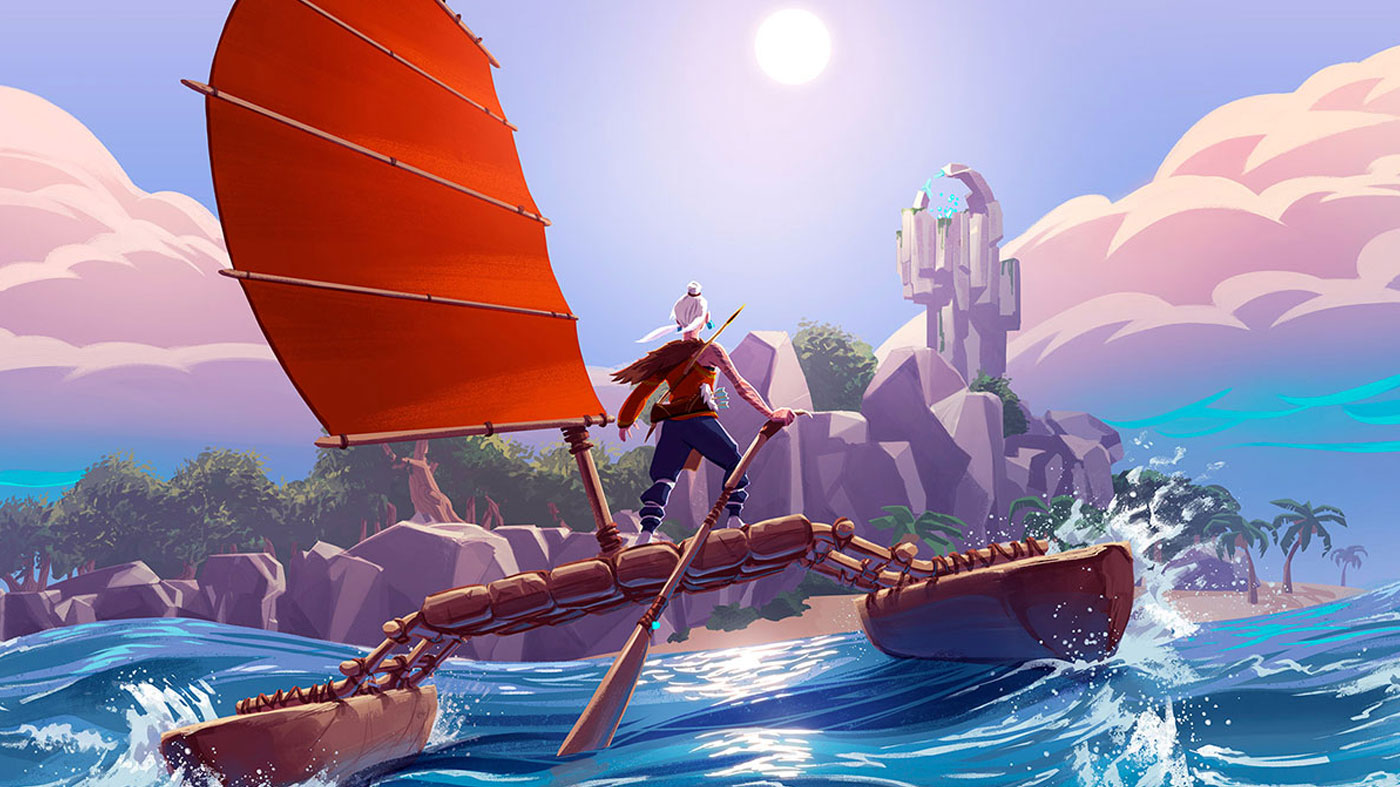Windbound sees you take the role of Kara, a young woman left stranded on a group of islands following a vicious storm. With nothing following the tumultuous event, Kara must use raw materials to build herself a new boat and further explore the islands and their mysterious first inhabitants. It’s a very “show don’t tell” style of storytelling very much drawing inspirations from games like Breath of the Wild and Shadow of the Colossus. However, it does feel like a simplistic way to provide context to what is essentially a very lovely looking crafting sandbox.
I say that because Windbound attempts to “own the intersection” between survival-crafting games and open-world adventure ones, but it ultimately feels like more of the former rather than the latter. Trying to riff off the minimalistic approach of Breath of the Wild while doubling down on all the aspects of that game you probably didn’t like. That is, the story takes a back seat to the action and really doesn’t serve as a motivating backdrop to the pillaging and crafting.
Windbound is, at its core, a crafting-survival game. It retains all the hallmarks of this type of game that you’d expect – lots of collected materials, heaps of gear to create, and a hunger system that is continually on your shoulder. The general gameplay loop is much like you’d expect too. With each new area, you enter having new components that can then be used to build up your equipment and weapons to improve yourself.
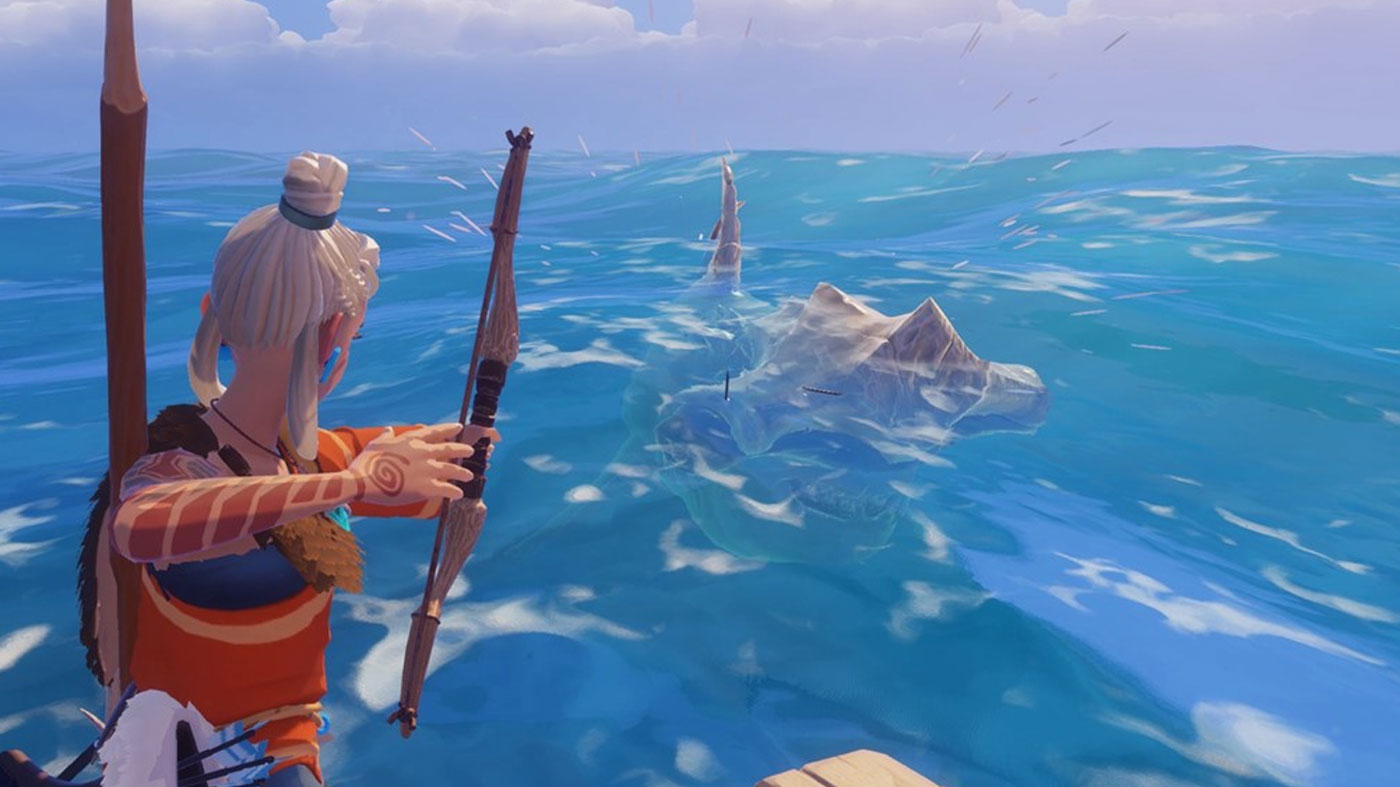
The big twist here is that you’re on a series of islands, so a lot of the travelling you’ll be doing is by boat, which you also build up. The cynical Zelda fan in me finds it hard to not compare this whole experience to The Wind Waker, albeit with Breath of the Wild “survival” sensibilities. And that’s really what Windbound is.
But the biggest problem here is that Windbound doesn’t feel like an open-world adventure despite how inviting it was. I was so keen to jump into this world, go sailing, and explore what these mysterious islands had to offer. Instead, I found myself continually being frustrated by how limiting the survival aspects of the game were.
Even playing on the “Story” mode, where survival aspects are toned down, the game was still nagging me, making sure Kara remains satiated. Couple this with a procedurally generated world – where the randomly generated islands you come across might not even have food on them, and Windbound gets frustrating fast.
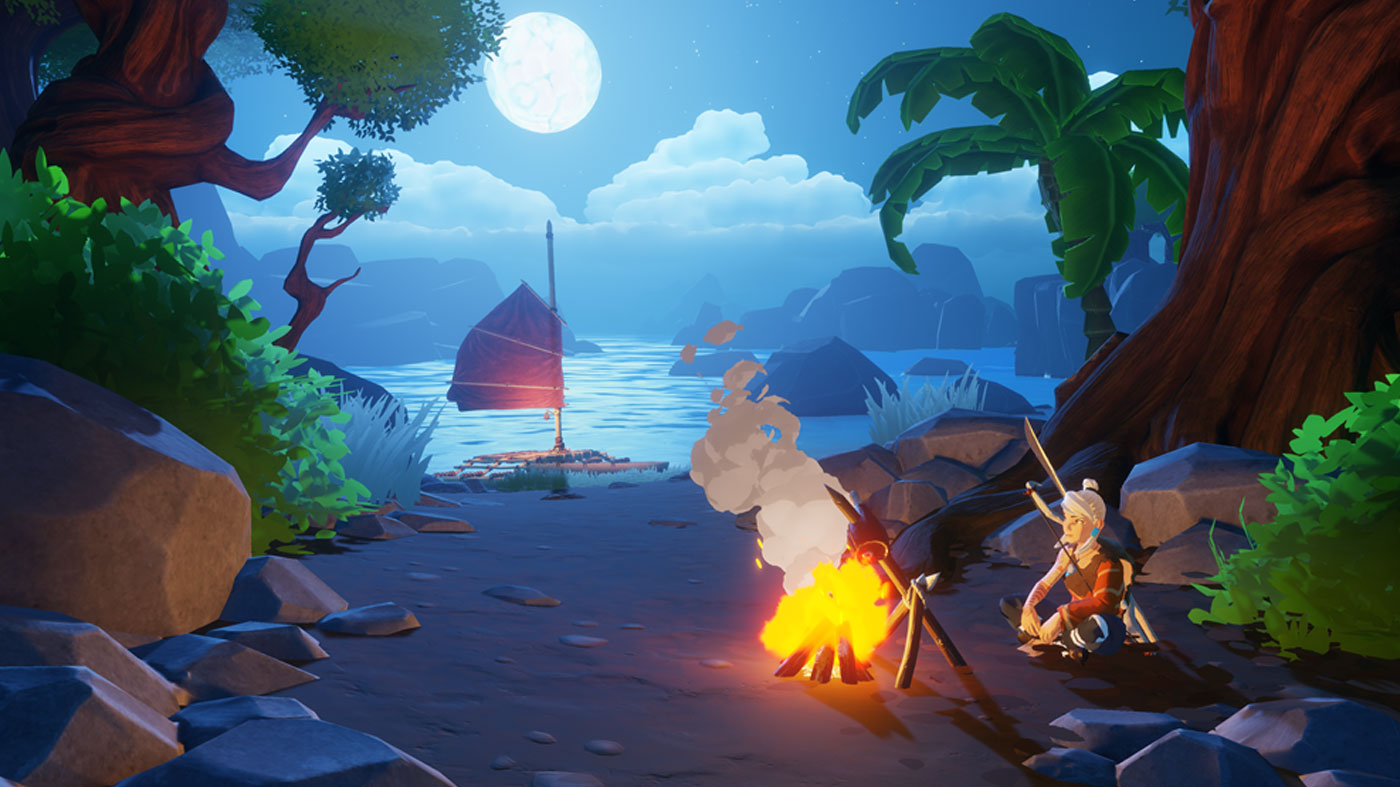
This feeling of frustration quickly becomes demotivating as the systems begin to turn on you in literal minutes. If Kara is hungry, she won’t become less efficient, she literally loses health until she dies. Subsequently, dying in the game destroys the boat you might’ve spent hours building, though your inventory is retained when playing in “Story” mode. I fully acknowledge that given how the procedurally generated world is handled, that another player might have a much more positive experience, but Windbound kept throwing curveballs at me that I was fed up with after several hours.
I persisted, though, because I was confident that the other half of this concept, the “open-world adventure,” half would see an eventual pay-off. But it didn’t. The crux of the adventure has you navigating an area, looking for three beacons, before activating a portal to move to the next one. It’s a very simplistic gameplay loop that feels like it was shoehorned into the game after the crafting and survival mechanics were – as not only is it simple, but it’s also repetitive.
But I did appreciate that Windbound has zero waypoints, hence encouraging you to explore. But the survival component of the game stops you from doing it at your own leisure, instead hurriedly pushing you from island to island in desperate search of food and nourishment. I understand that’s kind of the whole point of games that utilise survival mechanics, but it just seems so at odds at the otherwise pleasant and tranquil atmosphere of the game.
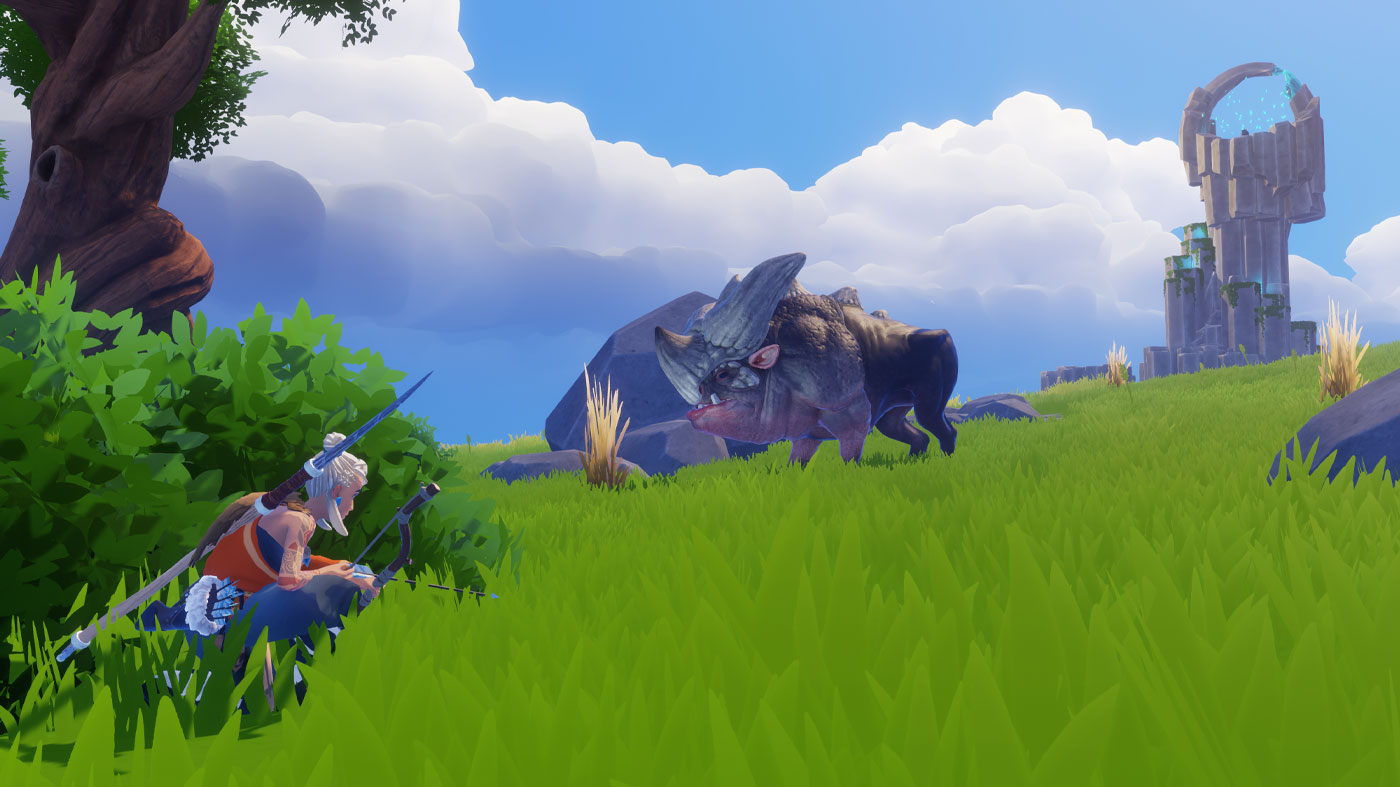
Sailing is your primary mode of transportation and feels very inconsistent. Drawing obvious inspiration from games like The Wind Waker and Oceanhorn, the direction of the wind provides a good indication of where to pitch your sail to get a smooth motion going. But the wind is so inconsistent that there’ll be times where you ship will be stuck, and no movement or tightening of the sail will get things going again.
Sailing does feel at it’s best when you’re being propelled through the encounters that occur between each portal. In them, you are presented with ancient glyphs that tell the story of the people who once inhabited this archipelago and then must make chase across a fast-paced wave of obstacles. They’re some of the “biggest budget” moments in Windbound and are the main times when you’ll come into contact with some of the more otherworldly creatures of the seas. They’re wonderful moments if a bit samey, coupled with some exhilarating music.
This is perhaps the biggest issue with Windbound – it fails to recognise what made the games it’s inspired by so engaging. Instead, sailing feels great and freeing when you get it right, but utterly frustrating while you wait for the wind to change the direction you want it to go. It can be utterly maddening to be stuck out at sea, waiting for the wind to change and then falling victim to the hunger system before being able to get to shore. You could prepare by bringing food with you onto the boat, but Windbound ensures that anyone trying to improvise on-the-fly suffers.
If you’re playing through the game on Story Mode, you can expect Windbound to be an appropriate length. There are so many factors at play, affecting just how long it takes you to get through Windbound, but with my horrible misfortune, the affair took around eight to nine hours. Mind you, it might’ve taken less if I didn’t fall victim to the survival mechanics so many times, but overall, it feels just right when it comes to length.
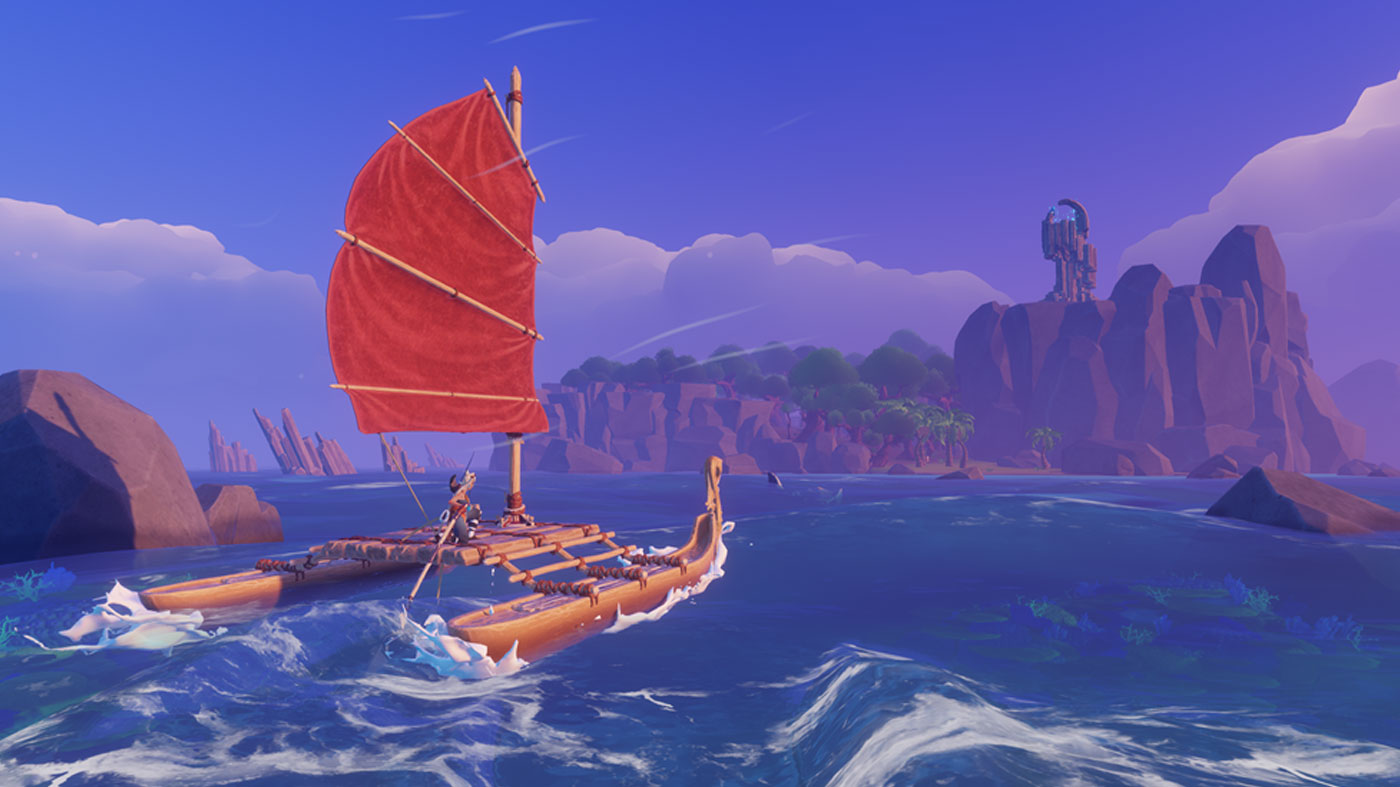
There is one thing that I cannot deny about Windbound, however, and that’s the fact that it is an absolutely gorgeous game. From the opening scenes to the moments where you step onto your first ancient ruins, it’s obvious that a lot of love and care has gone into crafting this bizarre and isolated world. Sure, it’s definitely reminiscent of other games that you’ve played before, but none have been rendered quite at the fidelity that Windbound offers.
Similarly, the game has some fantastic audio design, with some uniquely beautiful music acting as the perfect serene backdrop to the exploration. Cleverly playing when you’re either in combat or out in the open sea, the music does a great job selling the lone and isolated atmosphere of this mysterious archipelago. But, when you first land on a new island, it’s dead silent, which (perhaps unintentionally) heightens the tension of these unique locales that you’re discovering.
Which is really what stings the most about Windbound. It looks absolutely fantastic, on par with some AAA releases in terms of artistic flair and creative direction. But as a game, it doesn’t really do much, and it’s systems are at war with themselves to be something truly unique. Writers hate clichés, but it’s that old adage of “jack of all trades, master of none” that applies here.

